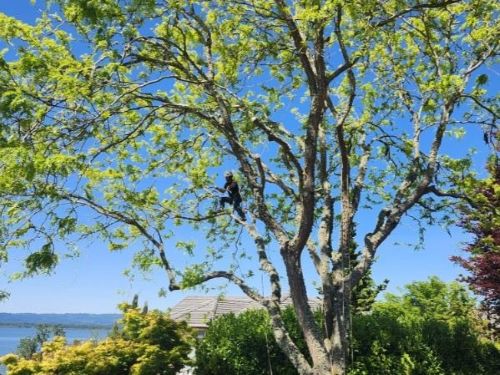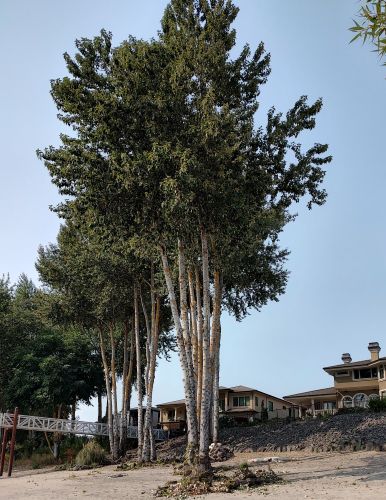Enhancing Tree Health and Longevity
Proper tree pruning is a vital aspect of tree care that promotes health, safety, and aesthetic appeal. In the Pacific Northwest, where diverse tree species thrive in wet climates and mild temperatures, knowing the right pruning techniques and timing can significantly improve growth, prevent disease, and reduce storm damage risks. This guide explores various pruning methods, when to prune, and the benefits of maintaining a well-pruned tree.

Common Tree Pruning Techniques
Crown Thinning
Crown thinning involves selectively removing branches throughout the tree canopy to increase light penetration and air circulation. This method helps reduce wind resistance, prevent disease, and improve fruit or flower production in fruit-bearing trees.
Best Practices: Avoid over-thinning; typically remove no more than 25% of the canopy per season to prevent stress.
Crown Raising
Crown raising removes lower branches to provide clearance for pedestrians, vehicles, or structures. It also helps improve visibility and reduces the risk of damage from low-hanging limbs.
Best Practices: Remove branches at their junction with larger limbs rather than cutting flush with the trunk to encourage healthy growth.
Crown Reduction
Crown reduction shortens the overall height or spread of a tree while maintaining its natural shape. This technique is useful for managing large trees near buildings, power lines, or other structures.
Best Practices: Focus on lateral branches rather than topping the tree, which can cause weak growth and increase vulnerability to pests and disease.
Deadwooding
Deadwooding removes dead, dying, or diseased branches to prevent hazards and reduce the risk of insect infestations. It also improves the tree’s appearance and promotes new growth.
Best Practices: Remove dead branches at the point of attachment, and avoid leaving stubs that can invite decay.
Formative Pruning
Formative pruning is performed on young trees to establish a strong structure and desirable shape. This technique helps prevent structural weaknesses, such as co-dominant stems, which can lead to future splitting or breakage.
Best Practices: Focus on one central leader and evenly spaced lateral branches for balanced growth.
When to Prune Trees
Timing is critical for effective pruning:
- Late Winter/Early Spring: Ideal for most deciduous trees, before new growth begins. Pruning during dormancy reduces stress and minimizes sap loss.
- After Flowering: Flowering trees should be pruned after bloom to preserve flowers for the current season.
- Summer: Light pruning is suitable for removing dead or dangerous limbs, but avoid heavy pruning during periods of high stress.
- Avoid Fall Pruning: Late-season pruning can stimulate new growth that may not harden before winter, increasing frost damage risk.
Benefits of Tree Pruning
- Health Improvement: Removing dead, diseased, or damaged branches prevents decay and reduces pest infestations.
- Safety: Pruned trees are less likely to drop limbs during storms, protecting people and property.
- Enhanced Growth: Selective pruning encourages strong branch structure and balanced canopy development.
- Aesthetic Appeal: Well-maintained trees improve landscape beauty and property value.
- Sunlight and Airflow: Thinning the canopy allows more sunlight to reach understory plants and improves air circulation, reducing fungal disease risks.
For Expert Pruning Services, Call Arbor City Today!
Pruning with Purpose: How to Help Your Trees Thrive
Tree pruning is more than just a cosmetic task—it is a crucial practice for maintaining tree health, safety, and beauty. By understanding different pruning techniques, the appropriate timing for each tree type, and the benefits of regular maintenance, homeowners and property managers can ensure their trees thrive for years. Combining careful pruning with professional guidance when necessary helps prevent hazards, encourages strong growth, and enhances the aesthetic and environmental value of trees across your property.

